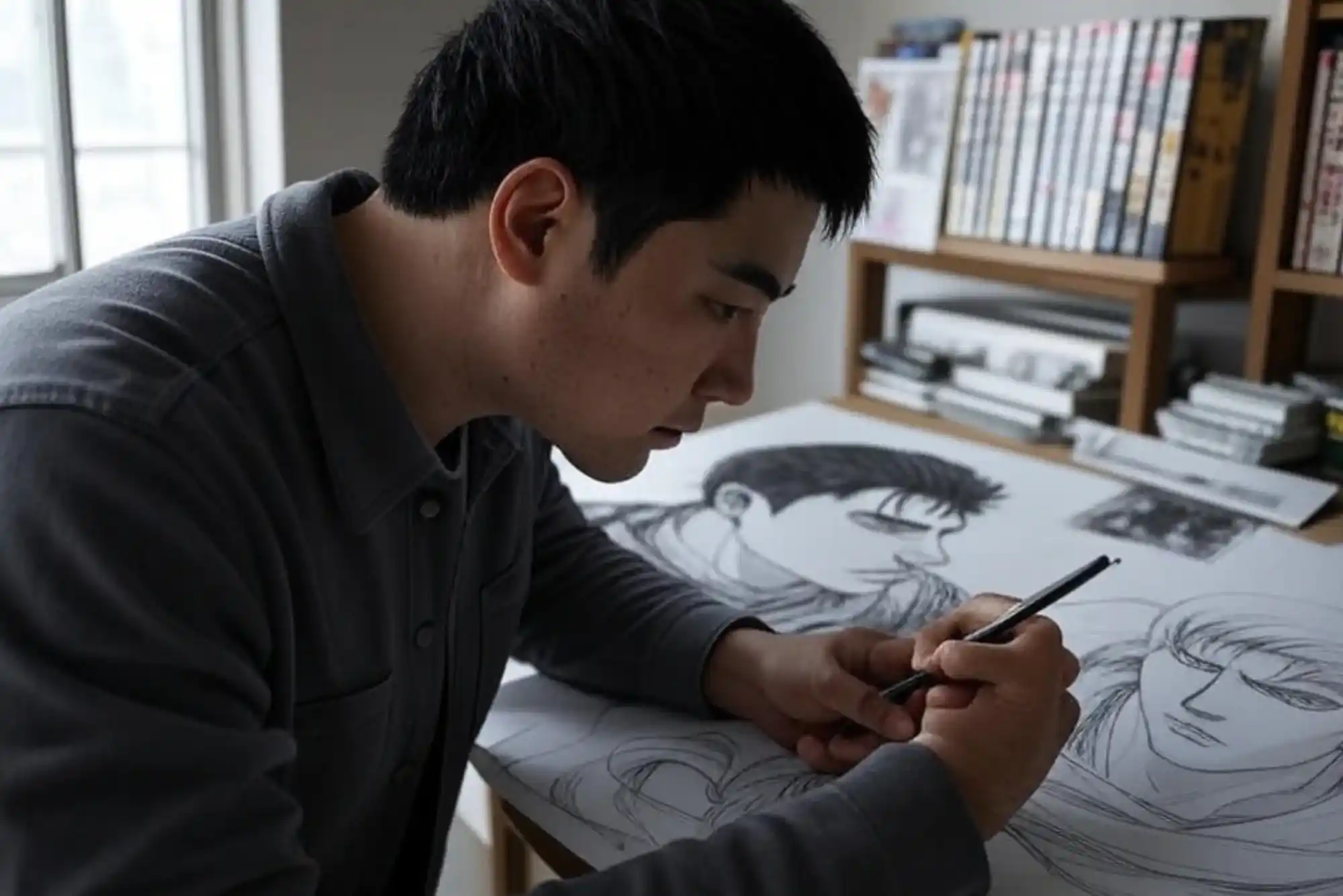Kentaro Miura is a name that resonates deeply within the manga and fantasy communities. Best known for creating Berserk, an epic saga that blends brutal realism with philosophical depth, Miura’s storytelling has captivated readers for decades. But while Berserk justifiably dominates the conversation, it’s far from his only contribution to the world of manga.
As a lifelong fan of manga, and someone who has spent hours pouring over the intricacies of Miura’s panels and plotlines, I often find myself drawn to his lesser-known works. These hidden gems provide a broader view of his creative spirit and allow us to appreciate his range not just as an artist, but as a deeply thoughtful worldbuilder.
Let’s take a journey into Miura’s world beyond Berserk, where fantasy still reigns but through different lenses, genres, and tones.
Early Projects: The Foundation of a Master
Before Miura introduced the world to Guts and the Band of the Hawk, he was already exploring bold ideas in shorter works that hinted at the genius to come. His first notable creation, Futatabi… (1985), was a one-shot manga created during his high school years. While not widely circulated, it earned recognition from publishers and set the stage for his future.
Shortly after, Miura worked on Noa (1985), another one-shot that explored post-apocalyptic science fiction. Even in these early attempts, one could see how Miura infused intense emotional depth into action-heavy plots. These short stories, although rough around the edges, helped him develop a distinctive storytelling rhythm that would define Berserk.
King of Wolves (Ōrō): History and Fantasy Collide
One of the most overlooked pieces in Miura’s portfolio is King of Wolves, a historical fantasy manga collaboration with Buronson, the writer behind Fist of the North Star. First published in 1989, this series showcases Miura’s talent in a different genre—melding martial arts, historical fiction, and fantasy elements into a tight narrative.
The story revolves around Iba, a modern-day martial artist who travels back in time to 13th-century Mongolia. There, he becomes entangled in the political and military turmoil of the Mongol Empire. What makes King of Wolves special is how Miura’s art brings ancient battles to life with the same kinetic energy seen in Berserk. The detailed armor designs and dynamic combat sequences reflect his obsession with authenticity and intensity.
Although the narrative feels more conventional than Miura’s later work, his visual storytelling elevates the material. It’s a short but fascinating dive into an alternate timeline where a modern man’s skills are tested against legendary warriors of the past.
Japan: A Cyberpunk Allegory
Following King of Wolves, Miura and Buronson reunited for Japan in 1992. This work marks a clear shift into dystopian science fiction, yet retains the high stakes and ideological tension that Miura handles so well. In Japan, the story follows a journalist and a historian who are mysteriously transported to a bleak future where Japan has lost its cultural and economic identity.
Here, Miura flexes his artistic versatility by blending grimy, industrial landscapes with a sharp sense of urgency. The themes explored—national identity, cultural erosion, and class division—are striking, and while the pacing is brisk, it raises essential questions about the consequences of globalization and technological progress.
Though not as emotionally complex as Berserk, Japan is a compelling fusion of fantasy themes with modern anxieties, and it proves Miura could tell socially charged stories outside of the medieval sword-and-sorcery realm.
Gigantomakhia: Mythological Fantasy Reimagined
Perhaps the most interesting of Miura’s works outside Berserk is Gigantomakhia, a short six-chapter mini-series published in 2013. This story stands out because it allowed Miura to take a break from the darkness of Berserk and explore a more optimistic world—while still maintaining his signature mythic scale.
Set 100 million years in the future, Gigantomakhia is a bizarre but beautiful tale inspired by Greek mythology. It follows the journey of Delos, a powerful warrior, and Prome, a mysterious girl, as they fight against monstrous gods and humans twisted by war. The dynamic between the two leads is much softer than the relationships portrayed in Berserk, suggesting Miura was experimenting with themes of healing, compassion, and symbiosis.
Artistically, the manga is stunning. Every panel overflows with detail, whether it’s the design of colossal titans or the intricate, otherworldly ruins. While short, Gigantomakhia reads like a love letter to myth, imagination, and the fantasy genre’s power to create entire cosmologies from scratch.
It’s a testament to Miura’s endless curiosity as an artist. Even while working on Berserk, he found space to play, to invent, and to sketch wildly different worlds.
Duranki: A Final Experiment
Miura’s last major project before his passing was Duranki, a work that truly deserves more attention. Launched in 2019, Duranki tells the story of Usumgal, a genderless child born between gods and humans. Set in a Mesopotamian-inspired fantasy world, the series explores themes of balance, duality, and innovation.
What makes Duranki unique is its almost lyrical tone. It’s a slower, more reflective story, far removed from the violence and tragedy of Berserk. Usumgal’s journey is not one of vengeance or war, but of discovery—of culture, architecture, and identity.
Though Miura provided the initial direction and design, the series was largely produced by Studio Gaga, his assistant team. It was also cut short due to his untimely death in 2021, making it a haunting reminder of the stories he still had left to tell.
Nonetheless, the few chapters that exist show a lighter, more experimental side of Miura. It proves that he wasn’t afraid to move away from his signature darkness and explore new kinds of manga storytelling.
Kentaro Miura’s Impact on the Manga and Fantasy Landscape
To truly appreciate Miura’s other works, it helps to understand his influence on the broader manga and fantasy genres. Even his side projects display a commitment to dense lore, philosophical depth, and meticulous world-building. Few manga artists have been able to balance technical brilliance with such layered emotional storytelling.
What stands out most about Miura’s body of work is that he never recycled ideas. Each project, from King of Wolves to Gigantomakhia, explored new themes, new aesthetics, and new moral questions. He was a student of history, mythology, art, and psychology—all of which shaped his unique ability to craft immersive narratives.
As someone who has followed his work closely, I often think about how Miura’s lesser-known titles reflect not just different genres, but different phases of his life. His early collaborations reveal a young artist hungry to prove himself. His later experiments show a more contemplative creator, trying to make sense of the world through softer, even more poetic lenses.
Final Thoughts: More Than Just the Creator of Berserk
While Berserk will always remain Kentaro Miura’s magnum opus, it’s essential not to let its shadow eclipse the rest of his artistic journey. From historical epics to cyberpunk thrillers, from mythological allegories to soft meditations on existence, Miura explored a wide range of themes and styles throughout his career.
These lesser-known works aren’t just side notes—they’re chapters in a larger legacy. They show us a creator constantly evolving, never content to remain static, and always willing to challenge himself and his readers.
If you’re a fan of fantasy manga, or even just good storytelling, exploring Miura’s other creations is more than worth your time. Not only will it deepen your appreciation of Berserk, but it will also introduce you to the vast imaginative universe that Kentaro Miura carried within him—one that, tragically, we only got to glimpse.
His pen may be still, but his worlds will live on.
Would you like a downloadable version of this article or want help formatting it for your blog?








